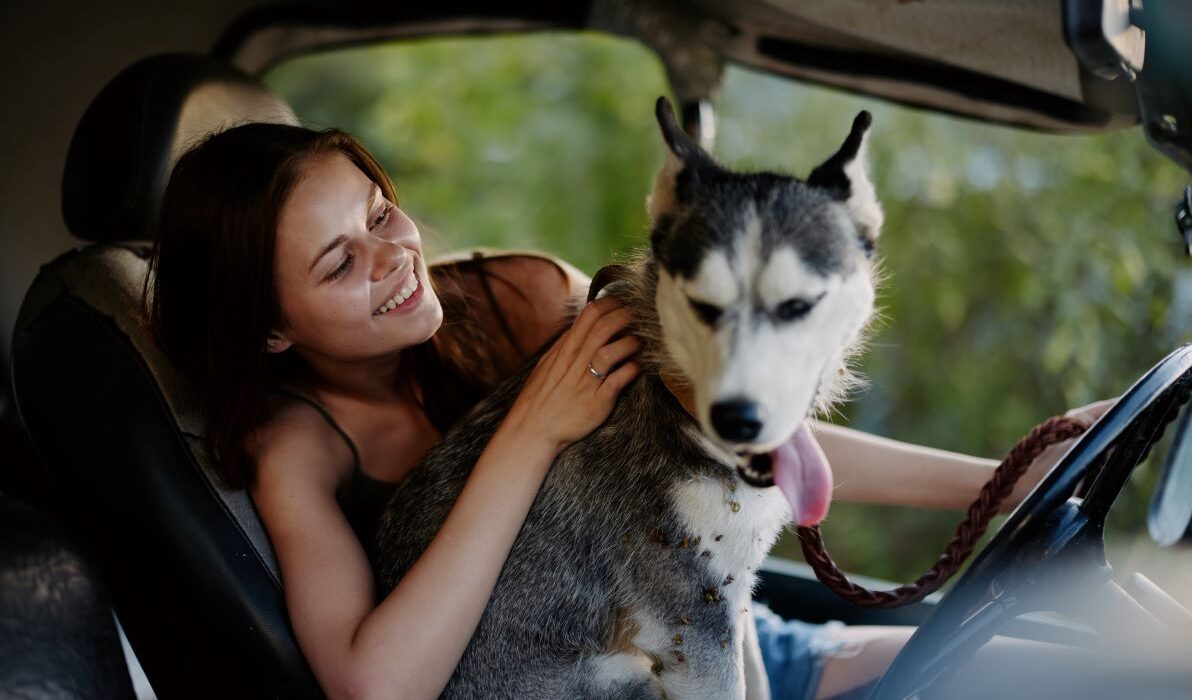Introduction to the problem of pet hair in cars
If you’re a pet owner, you know the hassle of dealing with pet hair in your car. It clings to seats, carpets, and crevices, no matter how much you clean. Pet hair sticks tightly to fabrics, making it tough to remove. But don’t worry! With the right tools and tips, you can tackle this issue effectively.
In this guide, we’ll explore why pet hair clings, how to remove it, and ways to prevent future buildup. Let’s get started and make car rides with your furry friend clean and enjoyable!
Understanding the types of pet hair and how they cling to car interiors
Pet hair comes in various types, and understanding them can make a difference when tackling the mess in your car. For instance, short-haired breeds like Beagles and Boxers shed fine hairs that embed themselves into fabric. These tiny strands are often more challenging to remove.
On the other hand, long-haired pets such as Golden Retrievers or Persian cats leave behind clumps of fur. This type may be easier to spot but can still cling tightly to upholstery.
The way pet hair adheres is also influenced by static electricity. Your car’s interior materials, combined with dry weather conditions, create an environment where pet hair seems almost magnetized.
Knowing these details helps tailor your cleaning methods for better results against those stubborn fur remnants lurking throughout your vehicle.
Preparing your car for pet hair removal
Before diving into pet hair removal, it’s essential to prepare your car. Start by removing all personal items from the interior. This includes bags, shoes, and any other clutter that may be in the way.
Next, take a good look at the seats and floor mats. Assess where most of the hair is concentrated. A thorough inspection helps you prioritize areas that need more attention.
Open all doors and windows for ventilation. This not only makes cleaning easier but also prevents any odors from becoming trapped inside.
If possible, park your vehicle in a shaded area or garage. Direct sunlight can make surfaces warm and sticky, making it harder for hairs to come loose during cleaning.
Gather your tools before starting—having everything on hand will streamline the process considerably!
Tools and techniques for removing pet hair from car seats, carpets, and other surfaces
When it comes to tackling pet hair in your car, having the right tools makes all the difference. A lint roller is a classic choice; its sticky sheets easily lift away hair from seats and carpets.
For stubborn strands embedded deep in fabric, consider using a rubber glove. Simply dampen the glove and run your hand over surfaces. The static electricity attracts the hair like magic.
A vacuum cleaner with a pet hair attachment can save you time too. Look for one designed specifically for removing fur—these often have powerful suction that grabs even the most elusive hairs.
Don’t overlook specialized brushes either. Grooming brushes or upholstery brushes are great for loosening pet hair before you vacuum or scoop it up manually.
Lastly, keep an old squeegee handy—it works wonders on large areas by gathering clumps of fur with minimal effort!
Tips for preventing pet hair buildup in your car in the future
To keep pet hair at bay, establish a routine. Regularly grooming your pet can significantly reduce shedding. A quick brush before they hop into the car makes a big difference.
Designate a specific spot in your vehicle for your furry friend. Use a blanket or pet seat cover that’s easy to wash. This will help contain loose fur and protect your upholstery.
Invest in good quality pet grooming tools, like rubber brushes or mitts designed for removing hair. Having these on hand encourages consistent maintenance.
Consider using lint rollers or specialized pet hair removers as you’re getting ready to head out. A few swipes can make all the difference.
Lastly, limit travel during peak shedding seasons if possible. Observing when their coat changes might save you from future headaches with cleanup.
DIY solutions and products that can help with pet hair removal
When tackling pet hair, DIY solutions can be both effective and budget-friendly. One popular method is using a rubber glove. Simply dampen the glove and run your hand over surfaces. The hair clings to the rubber easily.
Another handy tool is a lint roller. These sticky sheets are great for quick cleanups on seats or carpets. Just roll it over the areas affected by fur.
For upholstery, try making a mixture of water and fabric softener in a spray bottle. Lightly misting this solution before wiping with a cloth can help loosen stubborn hairs.
Additionally, consider using an old sponge with some water to wipe down hard surfaces like dashboards or door panels—this works wonders too!
These simple tips let you tackle pet hair without needing professional cleaning services every time your furry friend hops in for a ride.
Professional cleaning services and their effectiveness for removing pet hair from cars
When it comes to tackling stubborn pet hair, professional cleaning services can be a game-changer. These experts use specialized equipment designed for deep cleaning and effective removal of embedded fur.
With powerful vacuum systems and tools like rubber brushes, they can reach areas that regular home vacuums often miss. Their techniques not only lift away hair but also help eliminate allergens and odors associated with pets.
Moreover, many professionals offer specific pet packages tailored to car interiors. This ensures your vehicle receives the attention it needs without any damage to upholstery or surfaces.
While you might pay more upfront for these services, the results are often immediate and impressive. A clean car interior enhances both comfort and aesthetics—a worthy investment for any pet owner who loves their furry companions.
Safety precautions to keep in mind while removing pet hair from your car
When tackling pet hair removal, safety should always be a priority. Start by ensuring your car is parked in a well-ventilated area. This helps avoid inhaling dust and allergens stirred up during the cleaning process.
Wear gloves to protect your hands from irritation, especially if you’re using adhesive tools or chemicals. If you’re sensitive to pet dander, consider wearing a mask as an added precaution.
Be careful with any tools involving sharp edges or strong suction. They can damage upholstery or lead to accidents if not handled properly. Always test new cleaning products on a small, inconspicuous area first.
Finally, keep children and pets away while you work. Some cleaning methods may involve noise or substances that aren’t safe for them. Ensuring their safety allows you to focus fully on the task at hand without distractions.
Wrapping up with a summary of key takeaways and final thoughts
Dealing with pet hair in your car can be a challenge for any pet owner, but it’s not insurmountable. Understanding how different types of fur cling to surfaces gives you an advantage when tackling the mess. Preparation is essential—creating a clean environment before starting the removal process makes the task easier.
Equipping yourself with the right tools and techniques will streamline your efforts. From lint rollers and rubber gloves to specialized vacuums, each item plays a crucial role in effective cleaning. Applying these methods to various surfaces like seats, carpets, and even dashboard areas ensures that no spot is left untouched.
Preventing future buildup requires diligence but can be managed through regular grooming practices at home or investing in protective covers for your car’s interior. DIY solutions are plentiful too; many household items can double as efficient pet hair removers.
For those who prefer a hands-off approach or have extensive fur issues, professional cleaning services offer thorough options worth considering. They often employ advanced equipment designed specifically for removing stubborn hairs from all vehicle types.
When engaging in this task, remember safety first: ensure proper ventilation while using any products and avoid excessive scrubbing that could damage fabrics or finishes.
By employing these strategies—preparation, appropriate tools, preventive measures—and knowing when to call in experts—you’ll keep your car looking pristine despite sharing space with furry friends. Maintaining cleanliness enhances both comfort on drives and upholds value over time—a win-win situation for every devoted pet owner!


